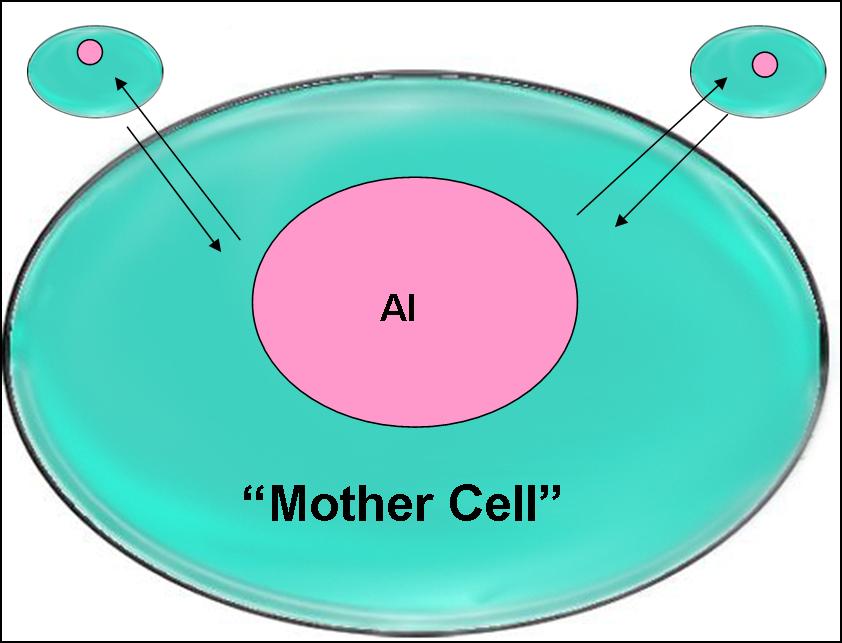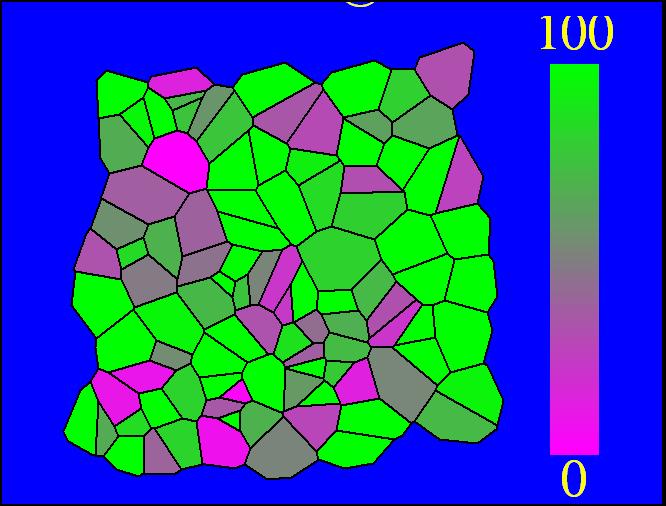McGill/Modeling and Simulations
From 2007.igem.org
(Difference between revisions)
Horiavulpe (Talk | contribs) |
|||
| Line 1: | Line 1: | ||
| + | As a two-gene network with stable solutions, our system does not always show sustained oscillations. However, factors such as different transcription rates from the two promoters, coupled with tight regulation (non-leakiness) of the promoters, can result in a situation in which oscillations are maintained. <br> | ||
| + | |||
| + | Discrete Rate Equations: <br> | ||
[[image:rates.jpg|120px]]<br> | [[image:rates.jpg|120px]]<br> | ||
[[image:equations.jpg|240px]]<br> | [[image:equations.jpg|240px]]<br> | ||
[[image:graphs.jpg|320px]]<br> | [[image:graphs.jpg|320px]]<br> | ||
[[image:phase plane.jpg|240px]]<br> | [[image:phase plane.jpg|240px]]<br> | ||
| + | One cell may be designated to represent many cells by allowing it to excrete and absorb many times the single-cell values of autoinducer: <br> | ||
[[image:mother celll.jpg|320px]]<br> | [[image:mother celll.jpg|320px]]<br> | ||
[[image:xlr8r.jpg|320px]]<br> | [[image:xlr8r.jpg|320px]]<br> | ||
Revision as of 01:30, 27 October 2007
As a two-gene network with stable solutions, our system does not always show sustained oscillations. However, factors such as different transcription rates from the two promoters, coupled with tight regulation (non-leakiness) of the promoters, can result in a situation in which oscillations are maintained.
Discrete Rate Equations:

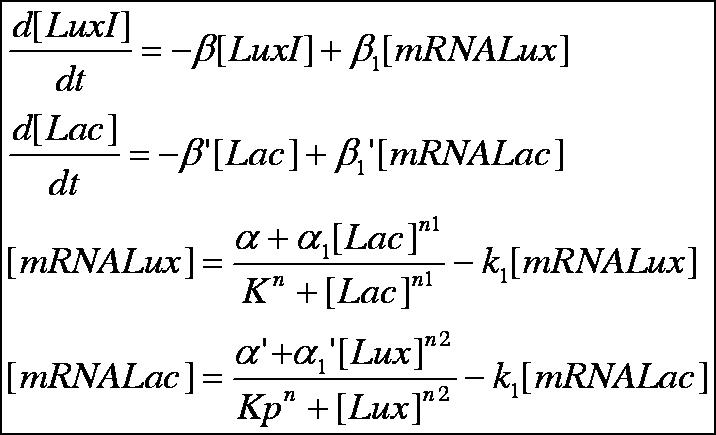
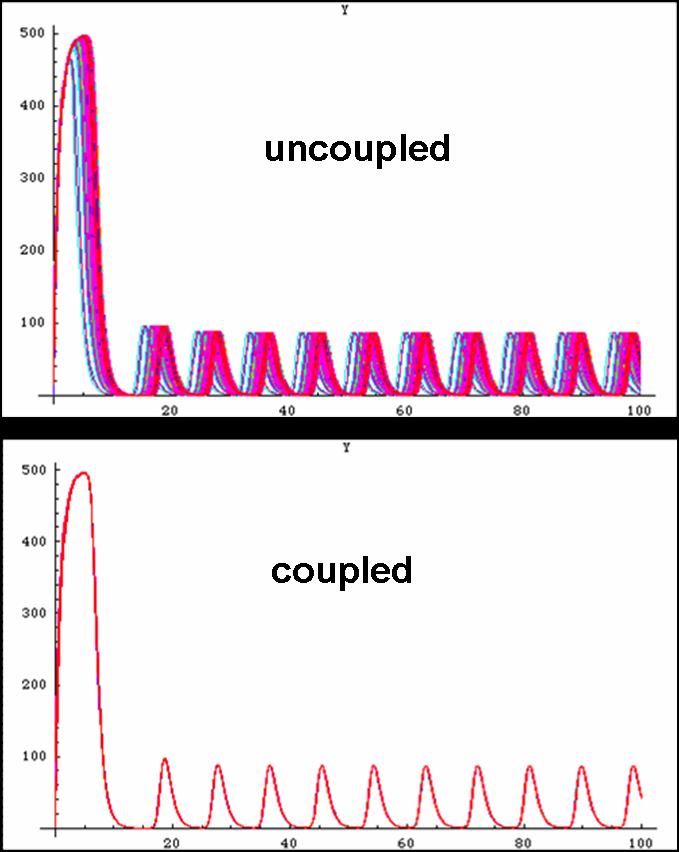
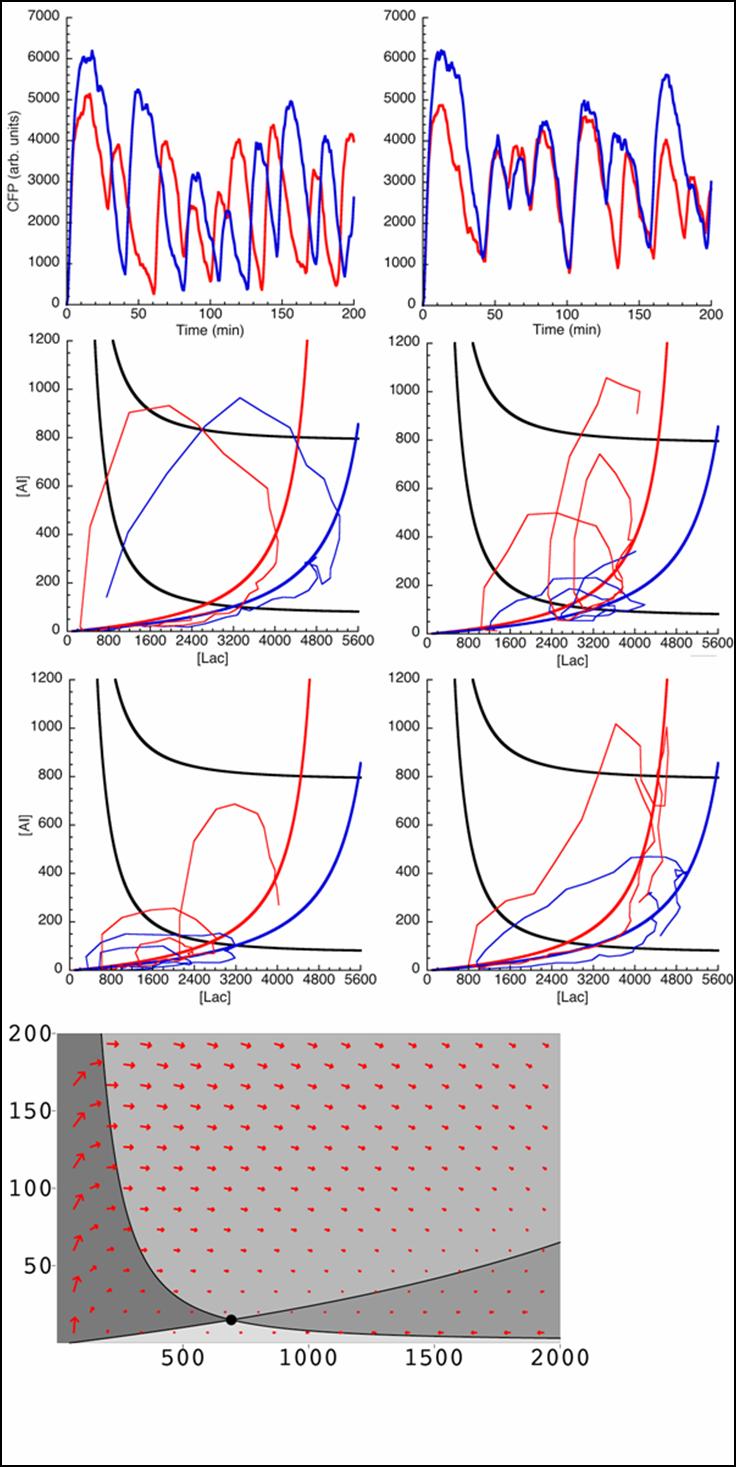
One cell may be designated to represent many cells by allowing it to excrete and absorb many times the single-cell values of autoinducer:
